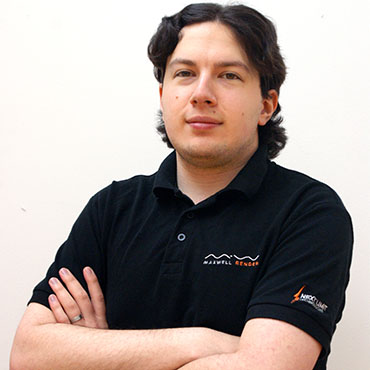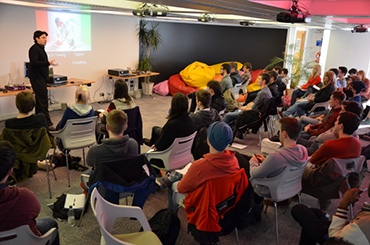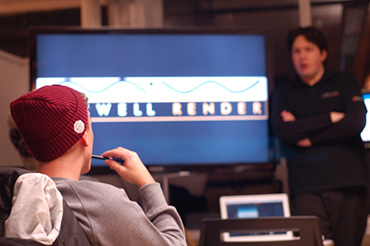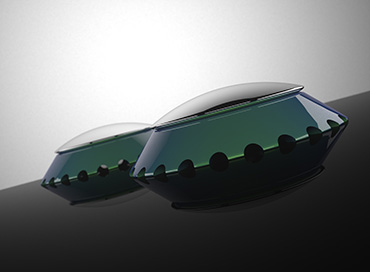Your Cart is Empty
Recent Articles
- Discover the Enhanced Features of Lands Design 6: Intuitive Interface, Rhino Plugin Integration, and Advanced Design Tools
- Efficiency Meets Innovation: SketchUp 2024 Unveiled
- Maxon One Spring 2024 Release Packs Particle Power, Toon Shading, and More
- TurboCAD 2024 Unveiled by IMSI Design: Discover the New Features and Enhancements
- Exploring the Latest InfraWorks 2025 Updates
- Introducing the Latest Innovations in Autodesk's ReCap Pro 2025
- Discover the Latest Enhancements in Civil 3D 2025
- Exploring the Newest Features and Enhancements in Revit 2025
- Explore the Latest Features in Vantage 2.3 Update
- Explore the Latest AutoCAD 2025 Enhancements: Activity Insight, Smart Blocks, and Apple Silicon Support
Interview with James Coleman: “What started as a result of not being able to move more than a few meters a day has ended being in a very strong position teaching one of the most powerful 3D/CAD render engines in the world.”
February 12, 2013 9 min read
I discovered James Coleman's work on Twitter and invited him to talk about being a student in England and becoming a certified instructor of Maxwell Render. Little did I know James had needed all his determination to study and work while battling a rare disease.

Novedge: Tell us about yourself and what you do.
James Coleman: I am a student of product design, currently in my last year at the University of Brighton. I also teach fellow students at the University and I have my own YouTube channel with tutorials on Maxwell Render.
I studied physics, electronics and maths (pure & mechanics) at college when I was 17, and chose to study mechanical engineering in university. Then something happened that would, for better or worse, shape the rest of my education forever. In 2007 it was discovered that I had a condition called chronic hypersensitivitythat affects 300,000 in the UK, and the root cause is still unknown, as is a cure. The recovery period is approximately half the patient's age, in other words, I still have 5 years of recovery ahead of me, but at least I now have a diagnosis and I am receiving treatment.
Once I found out about my condition, I started to use my spare time to make 3D models of spaceships in SketchUp and decided to change my course to Product Design Bsc.
Novedge: How did you get into teaching?
James Coleman:Whilst in my second year, my renders kept garnering attention, and I started showing groups of students how I made them. Then I setup some lectures in the afternoon. The first was hugely successful and I became the official Maxwell Render Mentor at the University of Brighton Center for Design Technology. When Next Limit announced their certification program I signed up immediately!
In the summer of 2012, I set up my Youtube channel and started recording basic tutorials, things like resolution and focal length, with the occasional overview of certain setup techniques. I also upload tutorials based on the questions my students asked me most frequently.


Then one day I was looking for inspiration for a new tutorial and I saw that VizPeople had released a free model of a DeLorean DMC12, which has always been one of my favourite cars. By coincidence, Maground had also recently released a free HDRI set with environment and backplates on hdri4u.com. I decided to strike while the iron was hot, and I made a series of tutorials involving setting up the model and then rendering it in a variety of different environments. The DeLorean Series got the attention of cadjunkie.com, which I was already a fan of. I ended up producing 10 free and 6 premium tutorials for them, Studio Lighting Techniques In Maxwell Render. The series went on to great acclaim, and like the DeLorean tutorial, continues to be one of the most popular videos on my channel.
Currently I am working on the tutorial series’ Maxwell Render Hot Tips and What Not To Render. There’s currently a new video in each playlist every week and there will be until April.
Novedge: Your university didn't have instructors to teach you how to render using Maxwell Render. How did you learn?
James Coleman:I learned by doing: I spent my time using the program, looking for answers in online forums and watching online tutorials.
Novedge: What software do you use?
James Coleman:I started out with SketchUp all those years ago for one very simple reason: it was free. I can’t remember exactly where I first heard about it, but I do remember using it with friends and learning from each other. It was also really helpful that SketchUp didn’t have high system requirements, the interface and the “sketchy” style made it approachable, and although it was designed for architecture, we used it for whatever we liked.
After I became frustrated with the limited modeling tools in SketchUp, I started searching for a more advanced alternatives. 3ds Max has a huge reputation on the web, but is only available on Windows, and I use a Mac. I heard about Cinema 4D and downloaded the demo. I loved it’s interface and I understood the basics almost immediately. The tutorials available online were extensive and it wasn’t difficult to find an answer to a problem. I decided to keep it and I’ve never regretted it. I still use it today when making quick drafts, but I wouldn’t recommend it to anyone starting out in product design, but plenty of other students on my course use it for animations, and for times when they need to make a model quickly and easily. 3ds Max is also popular with Windows users as an alternative to CAD centric software.

The CAD software we use at the university is less a matter of choice and more a matter of logic. SolidWorks is practically a requirement on CVs at the moment. Rhino is also available. When I started the course, I found Rhino to be more similar to Cinema 4D and hence I preferred it at the time. But now that I’ve used both for years, I always open SolidWorks before Rhino when I need to make a prototype, even for models with complex curves.
When I first became interested in photorealistic rendering, V-Ray was very appealing to me, but once I actually had V-Ray for Cinema 4D, I realized that I didn’t want to spend a lot of time adjusting settings, I wanted to spend more time designing and modeling. A few internet searches later and I found Maxwell Render. When I first tried it, it was still version 1, and it won me over in terms of ease of use and quality. One of the first images I ever made showed the model casting a shadow on the floor, when the only lighting in the scene was an HDRI. I’d never seen that before and it was enough to make a lasting impression. I dabbled between Cinema 4D’s own render engine, V-Ray and Maxwell Render for a while, but when Maxwell Render 2 was released I didn’t look back. For me it still delivers fantastic results, whether the image is complicated or simple, very easily.

And something I wish someone had told me when I started: whenever you see a render that really impresses you, 10-25% of all the work that went into making that image came from Photoshop, which is why it is also another vital tool in my arsenal of software. Alien Skin Exposure is a plug-in for Photoshop that I couldn’t work without, it mimics the effect of certain types of photographic film, but with a lot more control and subtlety than Instagram.
Novedge: What is a recent project that you worked on?
James Coleman: The most surprising thing about my product design course is that we focus on teaching communication, technology, professionalism, history, etc. It’s a doctrine that actually I agree with. Not just because it follows Dieter Rams’ principles, but also because we have the rest of our lives to design, so we might as well use the time now to make sure we know how to do it right, and then later on we can be eccentric if we like. Very often in product design, designers can get too caught up in the aesthetics of a product and forget about ergonomics, engineering, or any other topic. That’s not what’s taught in Brighton, and that's what makes it stand out from other, more “arts” based courses.
One project I enjoyed was making a “Revolutionary” product, with the tag-line of “It doesn’t look like a “X”, but it does what a “X” does”. I was inspired by one of my favorite ideas in product design, “the new application of an existing technology”, and because we were so pressured to design something that would be completely revolutionary, I decided to include some technologies that were theoretically possible but not available yet. I based the project on audio loudspeakers, because the technology in them hasn’t really changed for nearly 150 years, they’re still as electrodynamic as they were when they were first invented. The end result is the Levitating Superconducting Speakers concept.

After starting to use Maxwell Render 2, one of my projects was to identify a product which exhibited evolutionary design, and to continue that design onto its next generation. For my project I chose the Kodak Brownie, despite being out of production since the 1970’s, its design when it was discontinued was very similar to when it was originally conceived at the beginning of the century. Kodak would often make special edition cameras for major events and I immediately themed the project around the upcoming London 2012 Olympic Games. The project was small and it only took a few weeks to complete, but it went on to be featured on Yanko Design, and after that it was very popular on the web, I still see the occasional tweet about it! I put the amount of public interest in the project down to the quality of the renders. I approached Kodak to see if they would be interested in taking the project further, and although they weren’t interested at the time, they invited me to contact them about employment upon my graduation.

Novedge: What innovations do you see in your field (now or in the future)?
James Coleman:I think predicting the future has never really involved specific technologies, but instead looking at habits, lifestyles and routines, and then the technology is left to catch up. Touch screen technology, for example, was mostly a gimmick that had little real world value, until you could touch simultaneously in more than one place at once, and it was applied to a mobile phone. In hindsight it seems obvious that that’s how it should be used. So predicting specific technologies that will be developed, find a niche, and become cheap enough to be in common use, is much more difficult than imagining overall work flows and customs. My Levitating Speakers involved several different technologies that are not commonplace yet, or do not exist at all, including superdiamagnetic levitation, wireless power transfer, and flexible screens. It is certain that these technologies will develop over time, in fact when the project was completed, wireless speakers were still revolutionary, but now AirPlay is commonplace. The question is, will there be a benefit to having Levitating Speakers?

3D printing has got a lot of press lately regarding its potential. I agree that one day we may have 3D printers in every home, and in one end you would put waste, and then products, food and other luxuries will come tumbling out of the other. I think that one day, we will have “Star Trek” style replicators, powered by electricity which will probably come from fusion reactors. But not within my lifetime. At the moment, 3D printing and rapid prototyping often seem limited to making spare components when objects break. Even then they have to come from 3D files made by a professional. Consumers will want to be able to print complete objects, like kettles, laptops or phones. Even though 3D printers which are capable of making multi-coloured objects, and printing multiple components connected together have existed for some time, as someone who has worked with 3D printers for many years, I think we still have some way to go. But when we are there, they will change the world in ways which no one has yet imagined, and copyright and piracy laws will once again be brought into question.

In my particular area of interest (medical design), there are plenty of issues which are commonplace and well known. Drug resistant infections, obesity related complications, and aging population are the three problems which I expect to encounter in my design career. In much less than a century, certain bacteria have evolved to become almost immune to many typical antibiotics. If this trend continues, product design will have to play a major role in increasing the hygiene of hospital environments. Anti-microbial materials such as copper are already seeing a comeback, and although cloth bedsheets interwoven with silver (again for its anti-microbial properties) is a hugely expensive concept at present, if it becomes cheaper than treating patients, it will become a reality.
Despite being prepared for these trends, I don’t think there is anything that can or will prepare me for the problem of ageing population. There are practical, medical, and ethical issues where product design will be called upon to help. These issues are nothing new, but will be exaggerated in the future. With higher demand, and larger markets, products specifically for the elderly will become more commonplace, and inclusive design will have more influence over everyone. This effect is visible now, for example with non-step access to buildings being a legal requirement, and this trend shows no sign of stopping.
Novedge: What are your plans after graduation?
James Coleman:My ideal job would be a product designer at a company specializing in the medical industry. My overall impression of the purpose of product design is to make our lives more efficient, where is that more important than when well being, potentially lives, are at stake? Medical staff are often overworked and underpaid, and then they have to use equipment made by the lowest bidder. Then this equipment will not be updated unless it breaks or is recalled (the standard that dictates the design of an IV drip stand is nearly 50 years old, and has never been updated). And with humans living longer and getting fatter, the market is just going to get bigger (some pun intended).
My family is a big reason I feel this way. Three generations have in some way or another worked in the medical industry. I’m not brave enough to be on the front line like they are, but I wouldn’t mind sitting back at a comfortable distance and making the equipment that they use everyday a little bit more efficient.
Most of all, though, I’m going to recover from the condition that has practically dictated my life for the past 5 years. It’ll take another 5 years to be completely rid of it, but I’m looking forward to being able to walk to places without running the risk of being housebound the next day. I’m looking forward to working to improve the services that have served me for so long.
Related articles
Also in NOVEDGE Blog

Discover the Enhanced Features of Lands Design 6: Intuitive Interface, Rhino Plugin Integration, and Advanced Design Tools
April 30, 2024 3 min read
Read More
Maxon One Spring 2024 Release Packs Particle Power, Toon Shading, and More
April 10, 2024 4 min read
Read MoreSubscribe
Sign up to get the latest on sales, new releases and more …





